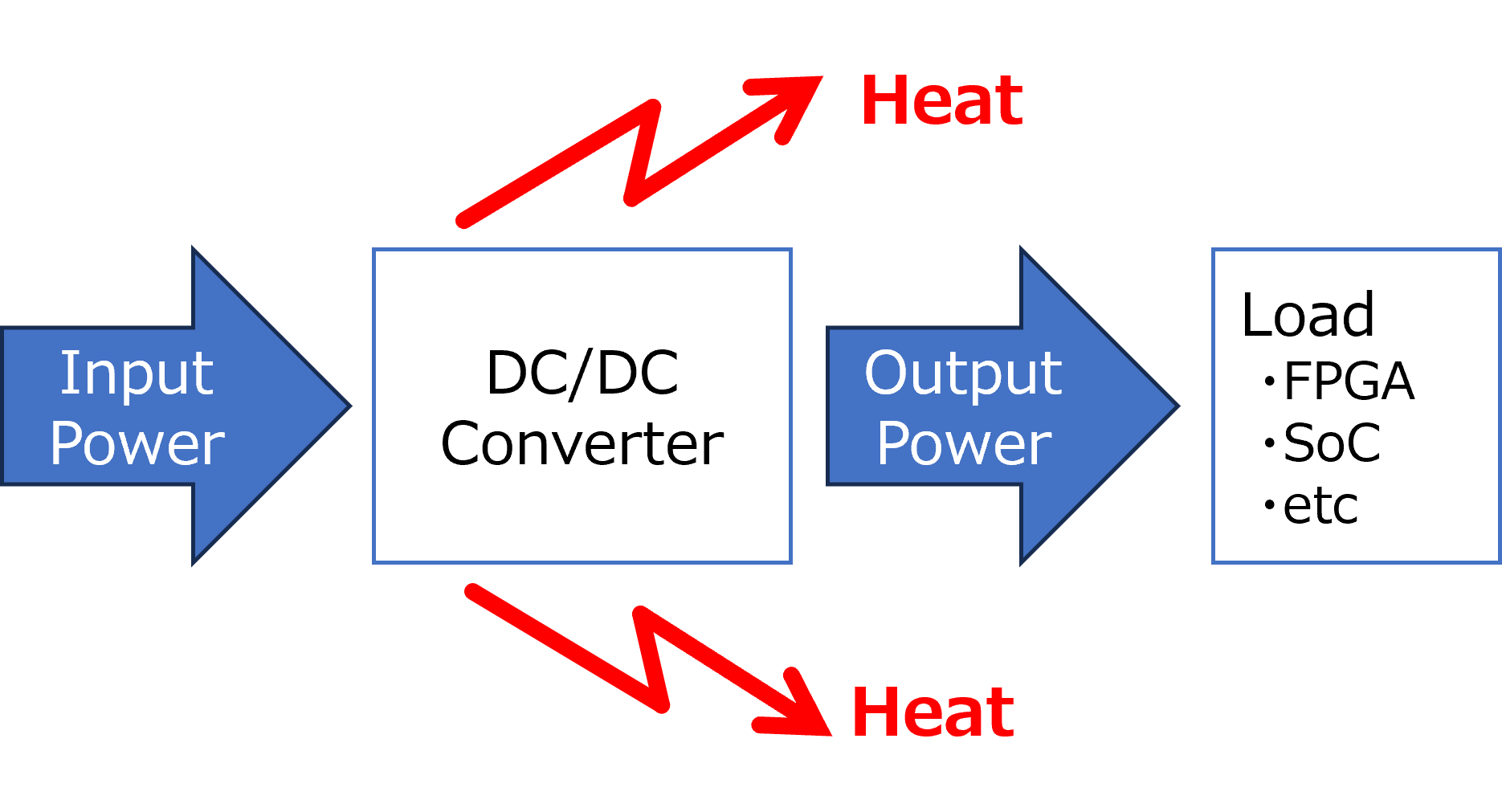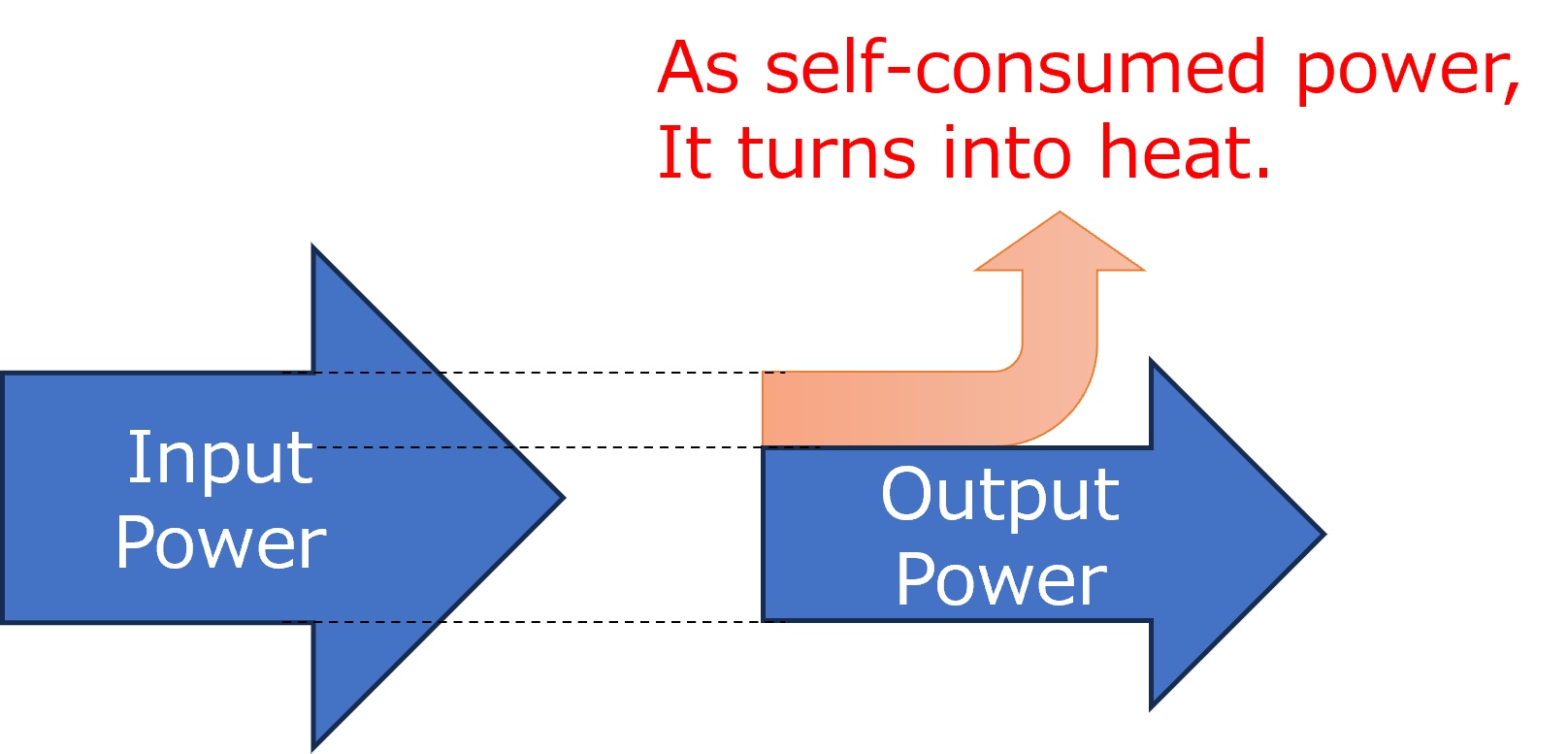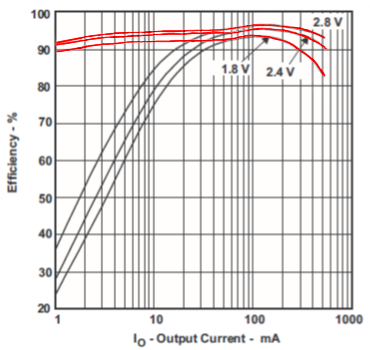For example, suppose you want 5V 0.1A (=0.5W) and you have a power supply with 5V 2A (=10W, a very generous specification) output and another with 5V 0.2A (=1W) output at hand.
If both of them do not have price and size issues, can both be used?
How is it on the loss?
Converters have more or less “Wasteful power”.
This is also called self-consumed power or quiescent power, which is the power that is lost just if the converter is in ON state, even if no current is supplied to the load.
For example, in a switching regulator, the power to drive the transistors (MOSFETs, HEMTs, etc.), the losses that occur just by turning these switching devices on and off, and the current consumed by the built-in controller IC are some of them.
The wasteful power exists even in a three-terminal-regulator, and it generally wastes more power so much as a heat radiation measure is often required.
The efficiency curve of the converter shows that the efficiency is lower at a light load. It is not because the loss increases but because the wasteful power becomes more remarkable if the output power decreases.


The wasteful power generally tends to be larger in the case of higher out power supplies.
In the comparison of converter’s efficiency curves, there are some converters that the efficiency is obviously better than that of others at a light load.
In this case, the followings can be said that those converters have the following functions at a high probability.
– Lower the oscillation frequency at a light load.
– Shift to the mode repeating oscillation and stop at light load.
These functions are aimed at reducing wasteful power by reducing the number of switching times.
While these features can reduce the loss at light loads, those may increase ripple noise and change the switching frequency, therefore, it is required to check if those do not affect the c circuitries in the subsequent stages.
When selecting a power supply, it is recommended to check the converter’s spec range and each function.
